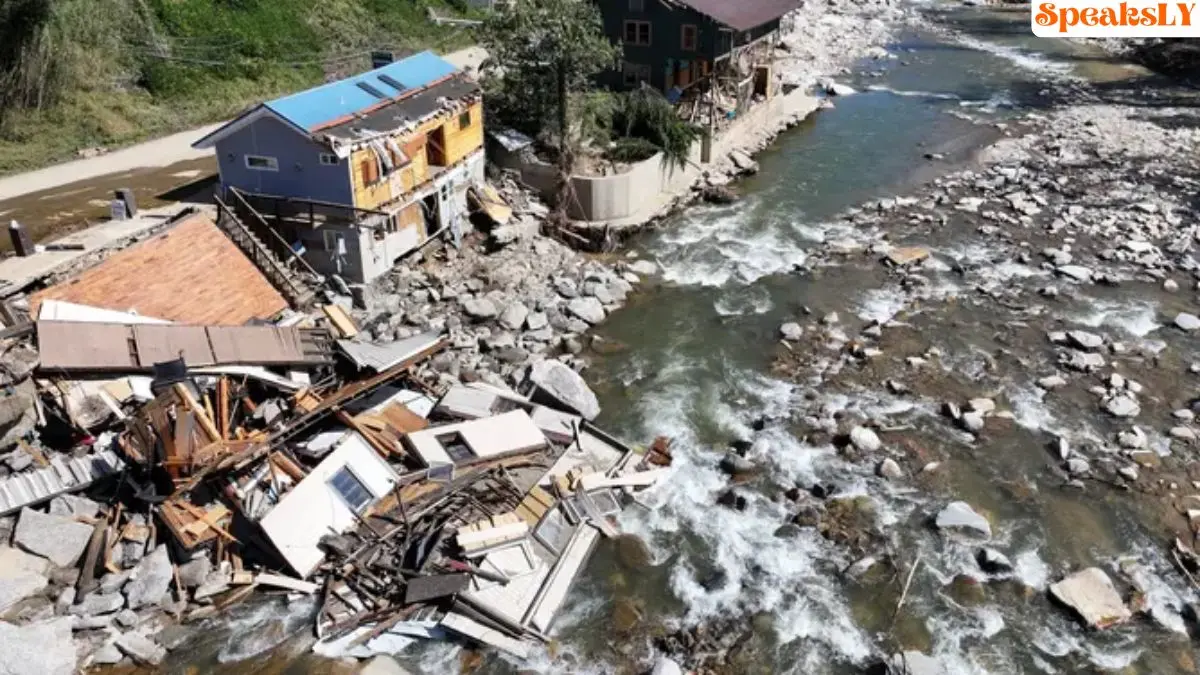North Carolina Helene: Tropical Storm Helene has wreaked havoc across Western North Carolina, leaving a trail of devastation and triggering ongoing recovery efforts. With over 93 confirmed deaths as of October 13, the storm has taken a toll on both life and infrastructure, particularly in rural and mountainous regions of the state. Yet as communities struggle to recover, relief efforts have been significantly hindered by misinformation and threats directed at federal emergency workers, complicating an already challenging situation.
Devastation by the Numbers
The scale of destruction is immense. Over 100,000 residents in Western North Carolina still lack access to clean running water due to severe damage to the North Fork Reservoir and local water distribution systems. Duke Energy has restored power to more than 1 million customers, but as of October 13, nearly 11,000 households remain without electricity, 16 days after the storm first hit.
One of the most striking impacts of Helene is the sheer volume of debris left behind. According to the Army Corps of Engineers, over 10 million cubic yards of debris have been created, enough to fill the Empire State Building nearly eight times. Major rivers, including the Swannanoa and French Broad, saw record-breaking crests, with the French Broad River in Asheville rising to 24.67 feet, eclipsing the previous record set during the Great Flood of 1916.
The storm has also devastated vital infrastructure, with the North Carolina Department of Transportation estimating that 100 bridges will need replacement. Early estimates suggest that repairing and replacing roads alone will cost several billion dollars.
Misinformation Hampers Relief Efforts
Amid the chaos, misinformation has added a new layer of complexity to the relief efforts. Former President Donald Trump falsely claimed that federal aid was being diverted from FEMA to undocumented immigrants, a statement debunked by multiple sources. This false narrative, fueled by conspiracy theories, has contributed to threats against federal emergency workers on the ground in North Carolina.
On October 14, federal responders in Rutherford County, a hard-hit area, were temporarily evacuated after receiving reports of an armed militia allegedly threatening FEMA workers. Though the immediate threat was later identified as a lone individual, William Jacob Parsons, who was arrested after allegedly making violent remarks, the incident underscored the dangerous climate misinformation can create. FEMA operations in the county resumed after a day, but the disruptions delayed much-needed aid to storm survivors.
Governor Roy Cooper condemned the misinformation, emphasizing the importance of protecting relief workers. “Significant misinformation online contributes to threats against response workers on the ground, and the safety of responders must be a priority,” Cooper said in a statement.
Aid Delays and Ongoing Efforts
FEMA, which has over 1,200 staff deployed in North Carolina, continues to navigate the challenges posed by both the storm and the misinformation campaign. Delays in in-person assessments, crucial for verifying damage and distributing aid, have slowed the process of getting help to affected residents. Former FEMA Administrator Craig Fugate expressed concerns that these disruptions will prolong the recovery, especially in the state’s rugged western areas, which are already difficult to access.
Despite these challenges, federal agencies and local law enforcement are working together to ensure the safety of relief workers while combating online misinformation. FEMA’s efforts have saved or supported over 3,200 survivors so far, and aid is gradually reaching communities in need.
As recovery continues, the full extent of Helene’s damage remains unclear. AccuWeather has estimated the cost of the storm’s destruction across the U.S. at up to $250 billion. With infrastructure damage, disrupted services, and thousands of lives upended, North Carolina faces a long and challenging road to recovery.
How You Can Help
As residents of the state work to rebuild their homes and communities, there are several ways to help those impacted by the storm. Donating to verified relief organizations and supporting local artists in Asheville’s River Arts District, which suffered an estimated 80% destruction, are just some of the ways to contribute to the recovery efforts.






